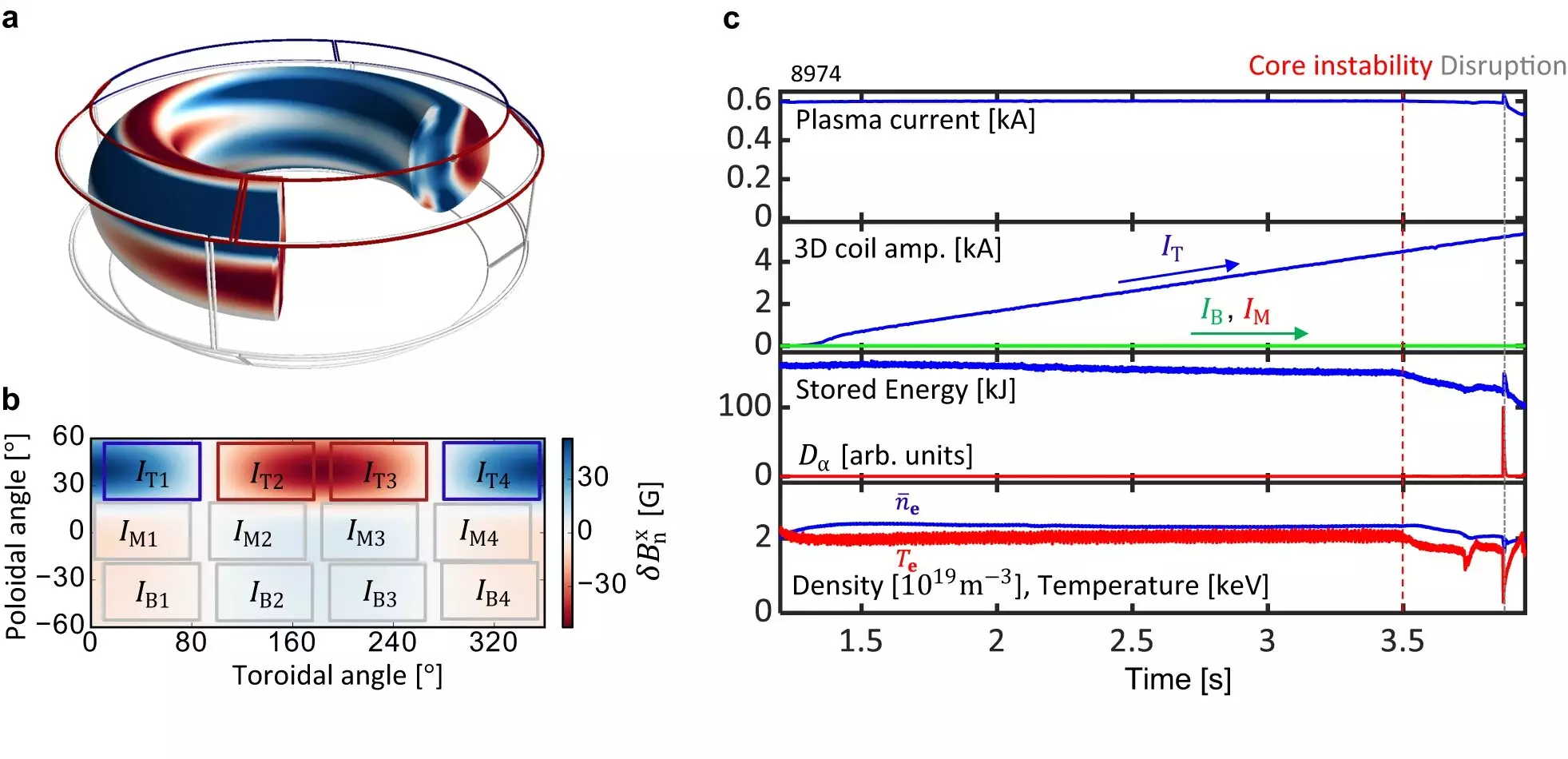When it comes to managing plasma, scientists draw inspiration from the Japanese art of Kintsugi, where broken pieces are fused together with gold to create something more beautiful. In this case, researchers are harnessing the imperfections in magnetic fields that confine a reaction to enhance the stability and efficiency of plasma for use as a power source. This innovative approach involves tailoring magnetic field imperfections, known as error fields, to optimize plasma stability.
Understanding Error Fields
Error fields are tiny defects in the magnetic coils of a tokamak device that hold the plasma. Traditionally viewed as nuisances, even the smallest error field could disrupt fusion reactions and damage vessel walls. Previous attempts to correct error fields often resulted in unintended consequences that made the plasma unsuitable for power generation. However, by identifying optimal error field corrections and mitigating instabilities, researchers have successfully improved plasma stability under various conditions.
The research team was able to eliminate instabilities at the edge of the plasma while maintaining core stability by intentionally degrading confinement. This strategic approach serves to break the symmetry of the system, allowing for controlled leakage of plasma through the error field to preserve overall stability. Just as a tiny hole in a balloon prevents it from exploding, carefully adjusting error fields can help stabilize both the core and the edge of the plasma simultaneously.
Enhancing Fusion Reactors
The findings from this study hold significant implications for the design of future tokamak fusion plants, promising increased efficiency and reliability. By fine-tuning magnetic field configurations, researchers can suppress edge instabilities without compromising confinement. Experimentation with error field adjustments on the KSTAR tokamak in South Korea has demonstrated the feasibility and effectiveness of this approach.
To further optimize control over plasma stability, researchers are exploring the integration of artificial intelligence into their control systems. AI can assist in predicting and implementing real-time adjustments to enhance plasma performance. By teaching the system what to expect and how to respond, researchers hope to streamline the process of managing fusion reactions.
Future Directions
As the fusion community moves towards incorporating magnetic coils outside of the vessel to prevent damage from extreme plasma heat, future research will focus on exploring these alternative configurations. This shift in design offers new opportunities to improve the efficiency and safety of fusion reactors, paving the way for a more sustainable and accessible energy source.
The art of plasma management continues to evolve, drawing inspiration from unexpected sources like Kintsugi. By embracing imperfections and leveraging them to enhance plasma stability, researchers are making significant strides towards achieving viable fusion power generation. Through innovative approaches and cutting-edge technologies, the future of fusion energy looks brighter than ever.


Leave a Reply